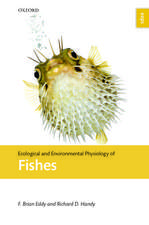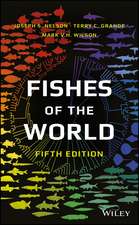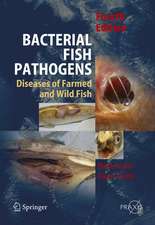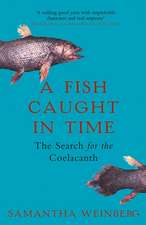Fish Karyotypes: A Check List
Autor Ryoichi Araien Limba Engleză Hardback – 17 apr 2011
| Toate formatele și edițiile | Preț | Express |
|---|---|---|
| Paperback (1) | 1229.58 lei 6-8 săpt. | |
| Springer – 12 dec 2014 | 1229.58 lei 6-8 săpt. | |
| Hardback (1) | 1240.47 lei 3-5 săpt. | |
| Springer – 17 apr 2011 | 1240.47 lei 3-5 săpt. |
Preț: 1240.47 lei
Preț vechi: 1512.77 lei
-18% Nou
Puncte Express: 1861
Preț estimativ în valută:
237.37€ • 253.82$ • 197.91£
237.37€ • 253.82$ • 197.91£
Carte disponibilă
Livrare economică 28 martie-11 aprilie
Preluare comenzi: 021 569.72.76
Specificații
ISBN-13: 9784431538769
ISBN-10: 4431538763
Pagini: 348
Ilustrații: V, 340 p.
Dimensiuni: 210 x 279 x 24 mm
Greutate: 1.1 kg
Ediția:2011
Editura: Springer
Colecția Springer
Locul publicării:Tokyo, Japan
ISBN-10: 4431538763
Pagini: 348
Ilustrații: V, 340 p.
Dimensiuni: 210 x 279 x 24 mm
Greutate: 1.1 kg
Ediția:2011
Editura: Springer
Colecția Springer
Locul publicării:Tokyo, Japan
Public țintă
ResearchDescriere
It is difficult and laborious not only for the beginner but also for the advanced researchers to survey literature and to appreciate former studies properly. To enable both to do this, the book is compiled.Purpose of the book covers karyotypes, which have been reported since the latest book on fish karyotypes (Klinkhardt et al. 1995), and following points are informed. 1. synonym of the species is checked based on Eschmeyer (2009, Catalog of Fishes) and a current classification of higher taxa follows Nelson (2006, Fishes of the World). 2. When the current species names differ from those in original karyotype papers, both names are listed. 3. Genome size is added. According to Gregory (http://www.genomesize.com/), genome sizes determined by different methods are differentiated. 4. As for the arm number, NF1 and NF2 are differentiated. M and SM are defined as two arm chromosomes in NF1, while M, SM, and ST are defined as two arm chromosomes in NF2. 5. Sex chromosomes, B chromosomes, and ploidy are checked. 6. The ancestral chromosome number (ACN), which is defined as diploid chromosome number of the latest common ancestor and inferred from Robertsonian transformation, is proposed. As the largest group of extant vertebrates, fishes offer an almost limitless number of striking examples of evolutionary adaptation to environmental and biotic selection pressure. The book is useful for verifying plausibility of phylogeny based on gene trees, for the study on relationships between karyotypes and biogeography, and for the study on relationships between karyotypes and biodiversity.
Cuprins
Preface.- Availability of fish karyotypes.- Fish vouchering and identification.- Classification of the extant fishes.- Historical transition of numbers of karyotyped species/subspecies.- Relationship between karyotype and genome size.- Database of karyotypes: How to use the database.- References.- Journal list.- Index.
Recenzii
From the reviews:
“This checklist contains the descriptions of karyotypes of 3,425 fish species … . the author stresses the relative value of karyotyping fish for systematics and phylogeny. He provides information on karyotypes of species of cyclostomes, chondrychthyes, actinopterygians and even lobe-finned fishes (!) gathered from numerous well-known and easily accessible journals. … a valuable source for all those over the world, who are interested in fish chromosomes and their significance in systematics and phylogeny.” (Hartmut Greven, Bulletin of Fish Biology, Vol. 13 (1/2), 2011)
“This checklist contains the descriptions of karyotypes of 3,425 fish species … . the author stresses the relative value of karyotyping fish for systematics and phylogeny. He provides information on karyotypes of species of cyclostomes, chondrychthyes, actinopterygians and even lobe-finned fishes (!) gathered from numerous well-known and easily accessible journals. … a valuable source for all those over the world, who are interested in fish chromosomes and their significance in systematics and phylogeny.” (Hartmut Greven, Bulletin of Fish Biology, Vol. 13 (1/2), 2011)
Caracteristici
A detailed index helps the reader access material quickly
Includes 12 bits of data for each karyotype for each species
Karyotypes of more than 3400 species/subspecies—the most complete checklist
Includes 12 bits of data for each karyotype for each species
Karyotypes of more than 3400 species/subspecies—the most complete checklist














